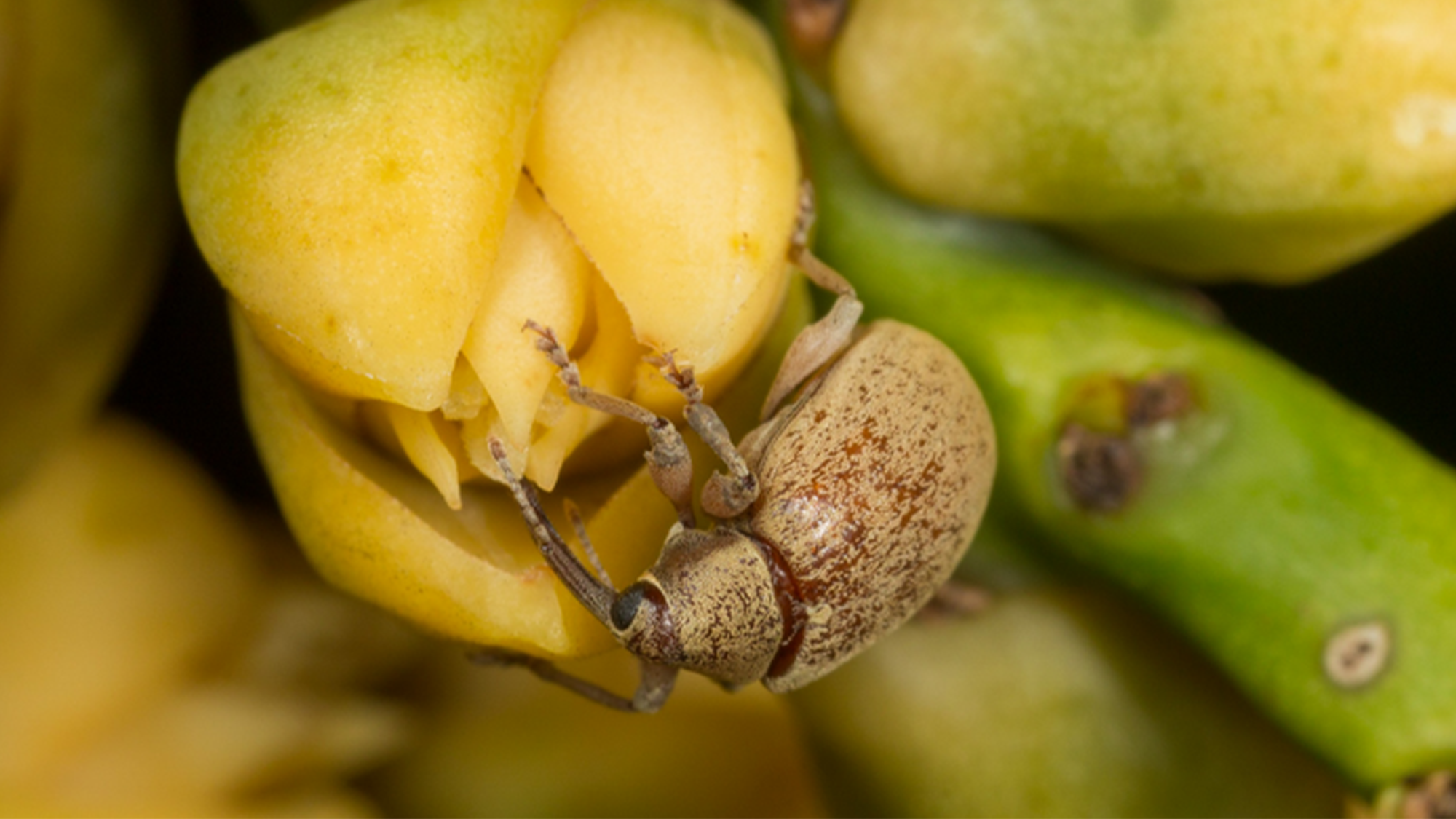

When it comes to the critical process of pollination, butterflies and especially bees are typically the most lauded participants. These pollinators fly from flower to flower to feed and fertilize plants by spreading pollen around. But, these fluttery creatures are far from the only species that help flowers reproduce and bloom. It turns out that some of nature’s most unsung and diverse pollinators are a type of long-snouted beetles called weevils.
[Related: Build a garden that’ll have pollinators buzzin’.]
A study published May 25 in the journal Peer Community in Ecology wiggles into the world of weevils, including some who spend their entire lifecycle in tandem with a specific plant they help pollinate.
“Even people who work on pollination don’t usually consider weevils as one of the main pollinators, and people who work on weevils don’t usually consider pollination as something relevant to the group,” study co-author and assistant curator of insects at the Field Museum in Chicago said in a statement. “There are lots of important things that people are missing because of preconceptions.”
The quarter-of-an-inch long weevils can be considered pests, especially when found munching on pasta and flour in pantries. Weevils used to find their way into the biscuits on Nineteenth Century ships that even highly ranked officers ate, as depicted in the 2003 seafaring film Master and Commander: The Far Side of the World. They can be so destructive that from 1829 to 1920, boll weevils completely disrupted the cotton economy in the South as they fed on cotton buds.
Despite this less than stellar reputation, the insects are still beneficial to many of the world’s plant species.
Scientists have identified roughly 400,000 species of beetles, making them one of the largest groups of animals in the world. Among this already big bunch of bugs, weevils are the largest group. “There are 60,000 species of weevils that we know about, which is about the same as the number of all vertebrate animals put together,” said de Medeiros.

The authors looked at 600 species of weevil, reviewing hundreds of previously published data on how weevils and plants interact to get a better sense of their role as prime pollinators. It focused on brood-site pollinators—insects that use the same plants that they pollinate as the breeding sites for their larvae. It is similar to the relationship between Monarch butterflies and milkweed, which is the only plant that Monarch caterpillars can eat.
“It is a special kind of pollination interaction because it is usually associated with high specialization: because the insects spend their whole life cycle in the plant, they often only pollinate that plant,” said de Medeiros. And because the plants have very reliable pollinators, they mostly use those pollinators.”
[Related: This lawn-mowing robot can save part of your yard for pollinators.]
Unlike Monarchs, brood-site pollinators take the relationship with the plant a step further. They rely on only one plant partner as a source for both food and egg laying, unlike adult Monarchs who will eat the nectar of many different types of flowers.
“This kind of pollination interaction is generally thought to be rare or unusual,” said de Medeiros. “In this study, we show that there are hundreds of weevil species and plants for which this has been documented already, and many, many more yet to be discovered.”
The relationship like the one between weevils and their plants means that they both need each other to flourish. Some industries, like palm oil, have already hurt forests, therefore disturbing the animal species that rely on them.
“Oil palm, which is used to make peanut butter and Nutella, was not a viable industry until someone figured out that the weevils found with them were their pollinators. And because people had an incorrect preconception that weevils were not pollinators, it took much, much longer than it could have taken,” said de Medeiros.
Misconceptions about weevils were one of this team’s motivations for the study. The team hopes that by summarizing what is known about the pollinators, more scientists and the general public appreciate the role of weevils as pollinators, particularly in the tropics.
